An Unexpected Legacy: A Simple Drawing that Touched the Nation
During his service in identifying casualties, artist Yechiel Ofner found unexpected recognition for a spontaneous drawing in a kibbutz. This article explores how a simple gesture during a time of chaos led to a national conversation.

"Your painting struck a chord with me; it must be preserved for future generations," the chief curator at the Tel Aviv Museum told artist Yechiel Ofner, leaving him speechless. Although he's been painting for nearly half a century, the idea that his work might become part of history never crossed his mind.
Even as we speak now, he sounds humbled and amazed. Alongside his role as a special education teacher, music and art have always been his passions, explored through various tools and techniques. Most of his artworks, vibrant and naive, depict figures from the Hasidic world and shtetls of the past. Yet nothing prepared him for the drama now unfolding because of an impulsive drawing.
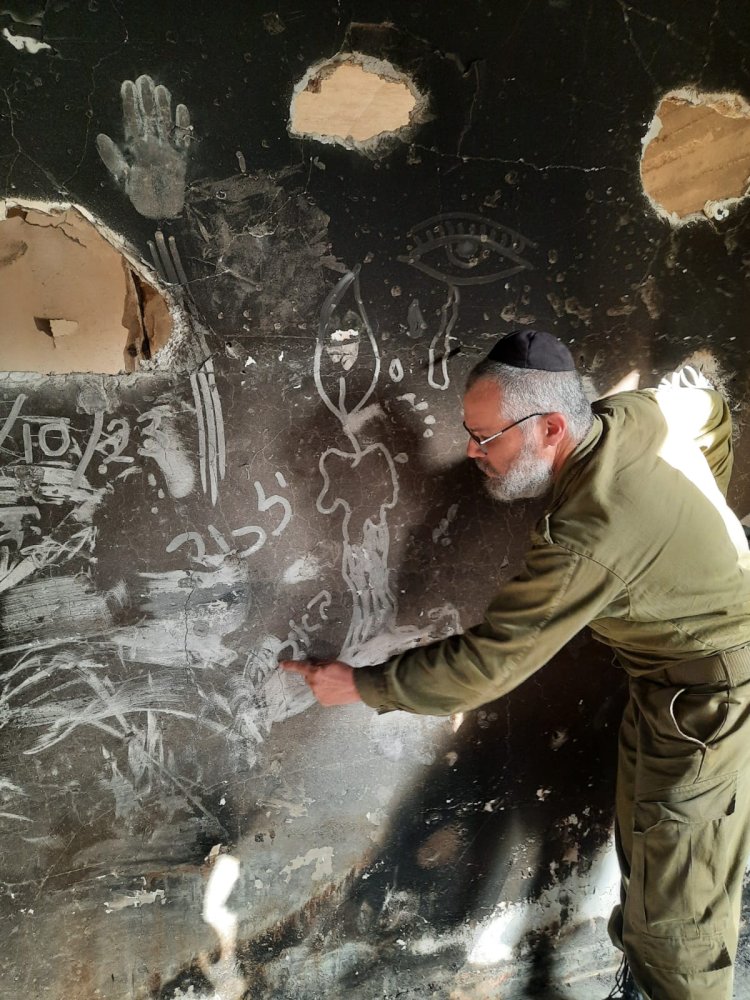
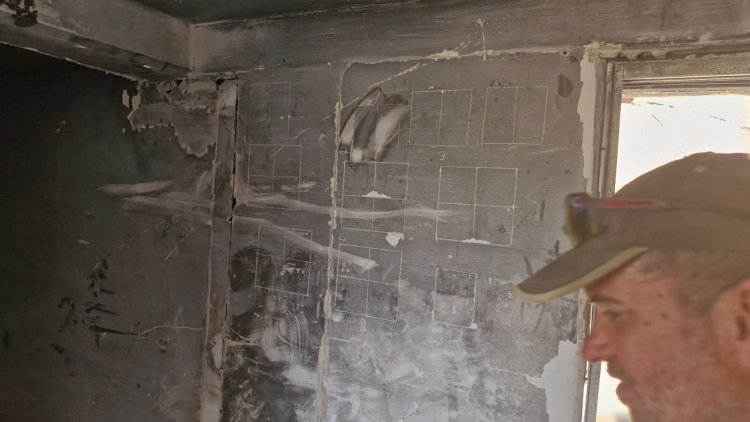
Art Amidst Chaos
Ofner's story begins on Simchat Torah 5784. "My family and I were visiting my brother-in-law in Ashkelon," he recalls. "At six-thirty in the morning, when the attack began, the building we were in was hit directly. Everything shook, and our shelter door burst open, but thankfully, no harm came to us.
"In that chaos, I received a call from my commander, summoning me to the field. I belong to a unit that identifies fallen soldiers. At that time, the full scope of the situation was unclear, but I was informed of an incident involving 'dozens of casualties' and instructed to report to the southern base. Even then, I didn't grasp the risk I was taking by leaving my wife and children to head towards the conflict area.
"Upon reaching the base after a short drive, it became apparent that our task was extensive, stretching beyond that fateful day into the following ones. Our unit's exceptional work earned our commander a medal of bravery, as we were responsible for locating many bodies that would otherwise have been lost. Our efforts allowed many families to find closure as they learned the fates of their loved ones and were able to give them a proper burial—something not always possible in such situations."
One location where Ofner's unit operated was Kibbutz Kisufim, the site of severe tragedies where 12 kibbutz members were killed. In one of the homes, belonging to the Zak family, where parents Itay and Eti were murdered with their 14-year-old son Saguy, Ofner completed the necessary tasks and then, almost absentmindedly, drew on a soot-covered wall with his finger.
"It was a drawing that took 2-3 minutes," he recounts, "depicting the first images that came to mind—I pressed two palm prints on the wall like a child screaming 'help!' alongside two soldiers with rifles protecting him."
Why did you create this particular drawing?
"I honestly don't know. Perhaps I drew what I wished for—that our soldiers would protect the child and save him, even though that didn't happen. Maybe I simply painted my dream. I didn't even sign my name, as I didn't consider it a professional graffiti or anything significant. It was just a heartfelt creation."
He never imagined what would follow. "Months later, I received a call from the 'Yad Izhak Ben-Zvi' Institute asking if I knew anything about that drawing. I confirmed I was the artist, and they informed me: 'We decided to preserve the wall for documentation, and we've been working on this for several months.'"
What does that mean?
"I didn't understand anything at first. But they continued explaining the unbelievable: the wall was to be uprooted, preserved, and turned into a museum exhibit. Part of this effort involved visits from the chief conservator of the Tel Aviv Museum of Art and other professionals and engineers to advise on safely detaching the wall without destroying the structure, and of course, transporting it. The longer we talked, the more I realized the complexity of the task, as this type of soot-based preservation was unprecedented in Israel. They consulted museums worldwide and conducted testing on adjacent walls to determine the preservation materials' reaction. Only then could the preservation process proceed."
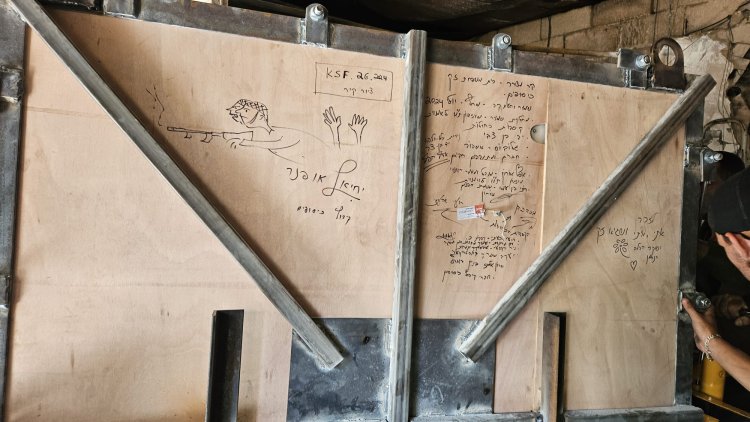
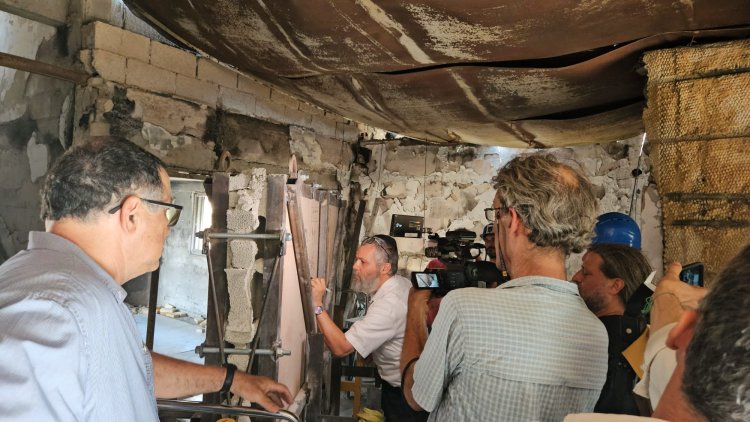
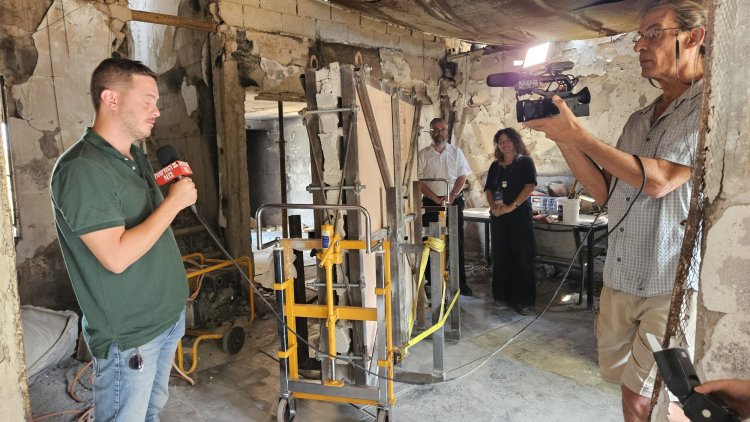
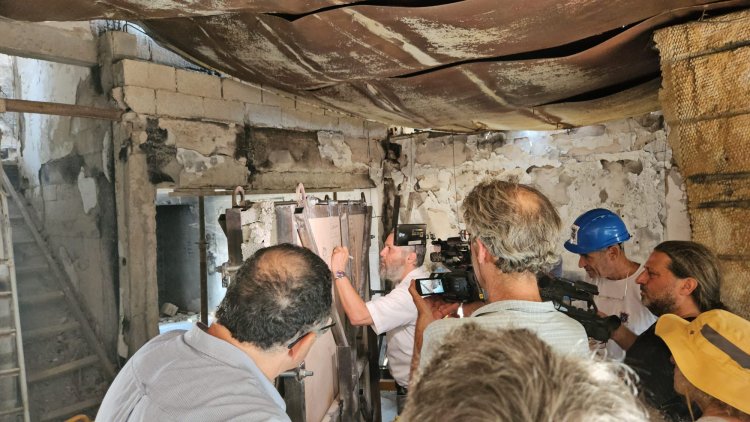
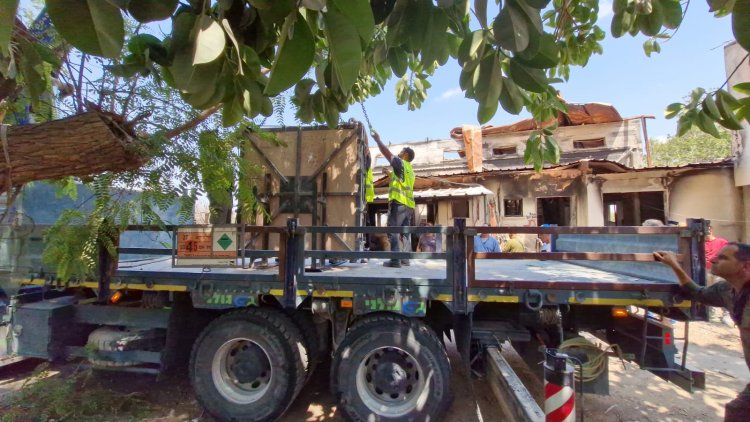
A Testament for the Future
Months ago, Ofner was invited to participate in the ceremonial relocation of the wall from the kibbutz to the museum. "I came with my wife," says Ofner, "although we prepared ourselves for something big, we couldn't have imagined the scale. We met the brother of one of the victims, who told me he visited the apartment after some time and was stunned by the drawing, which took his breath away and deeply shocked him. He was among those who recommended preserving the wall.
"Then the significant moment came when the crane lifted the wall, and everyone was deeply moved—to see the wall intact and undamaged. The wall was carefully transported to the Tel Aviv Museum, where it is to become a 'Israeli heritage artifact' featured with its story for future generations. Interestingly, the preservationists called it 'the most complex operation within the preservation process for the October 7th massacre in the Gaza border area.'"
"Personally," says Ofner, "it thrills me to think this painting will accompany the people of Israel, and as the chief museum preservationist, also an archaeologist, told me: 'In the future, some will deny the October 7th massacre occurred, and our duty will be to provide solid evidence, like this wall.'"
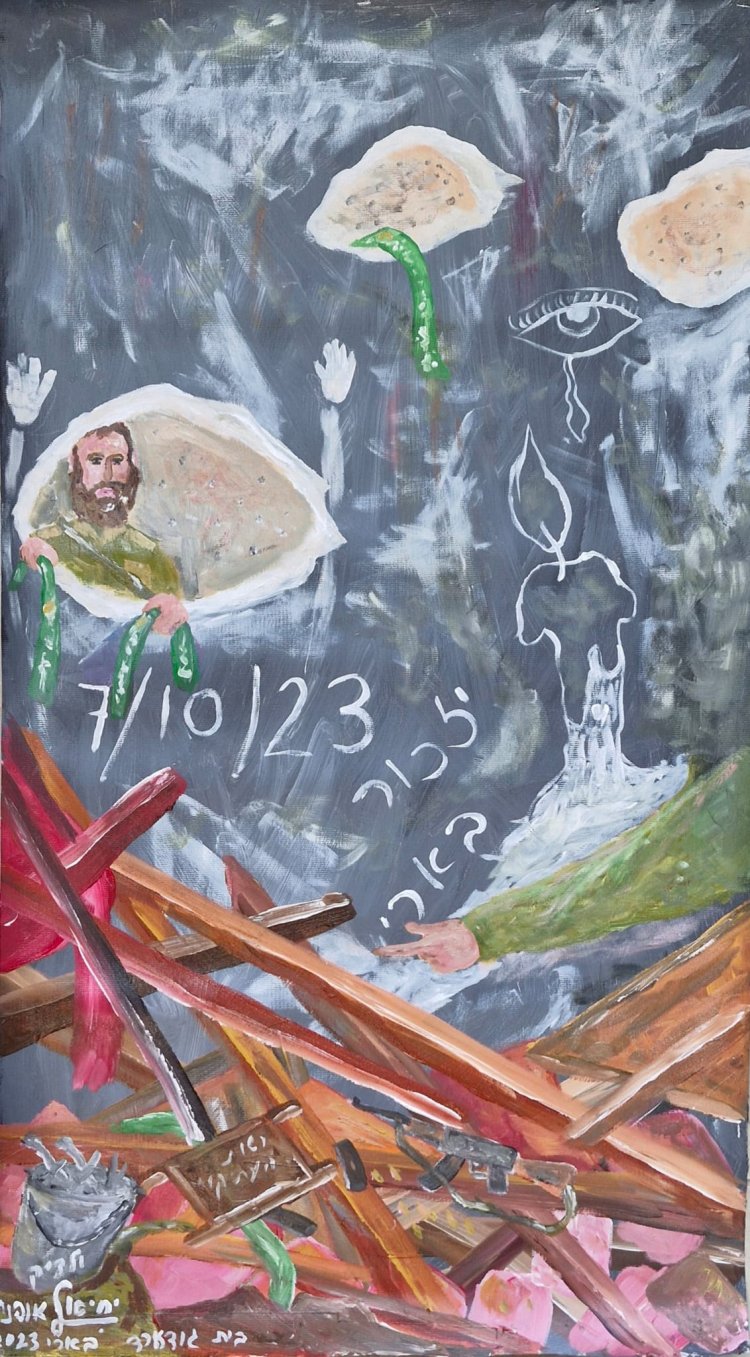
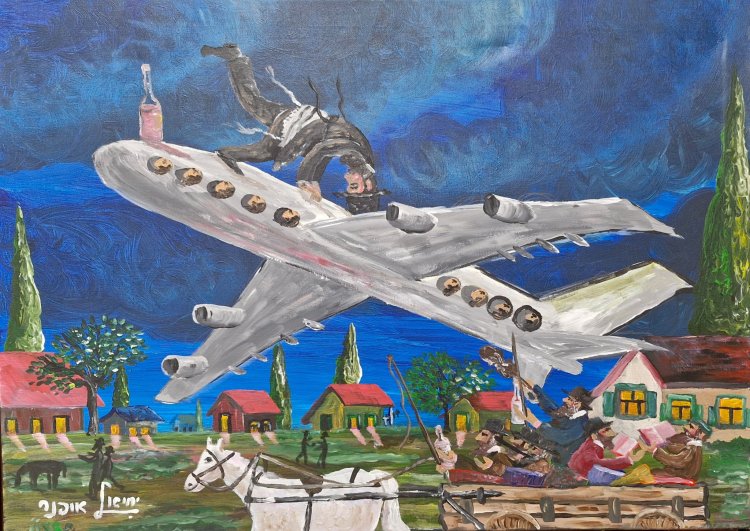
Closure in Jerusalem
While the wall from Kibbutz Kisufim is preserved, many of Ofner's other drawings on house walls in the kibbutzim remain, etched deeply in his heart, carrying the weight of their tragic significance.
"Just a month before the war broke out, I visited Auschwitz," he shares, "I saw the gas chambers where soot still lingers—places where Jews were burned, and suddenly I found myself in my homeland facing a similar situation. It was overwhelming, and I felt compelled to paint and create."
The other drawings were not preserved, but recently he had a new opportunity to document them during a unique exhibition at the Shelter Gallery on Yehuda HaMaccabi Street in Jerusalem. The exhibition focuses on Ofner's works, and as part of it, he was asked to recreate the six-meter wall art he did at Kibbutz Kisufim. "I feel this completes the cycle," he says with emotion, "as people come here to hear the story and draw strength, which is crucial for all of us, especially during these times."

